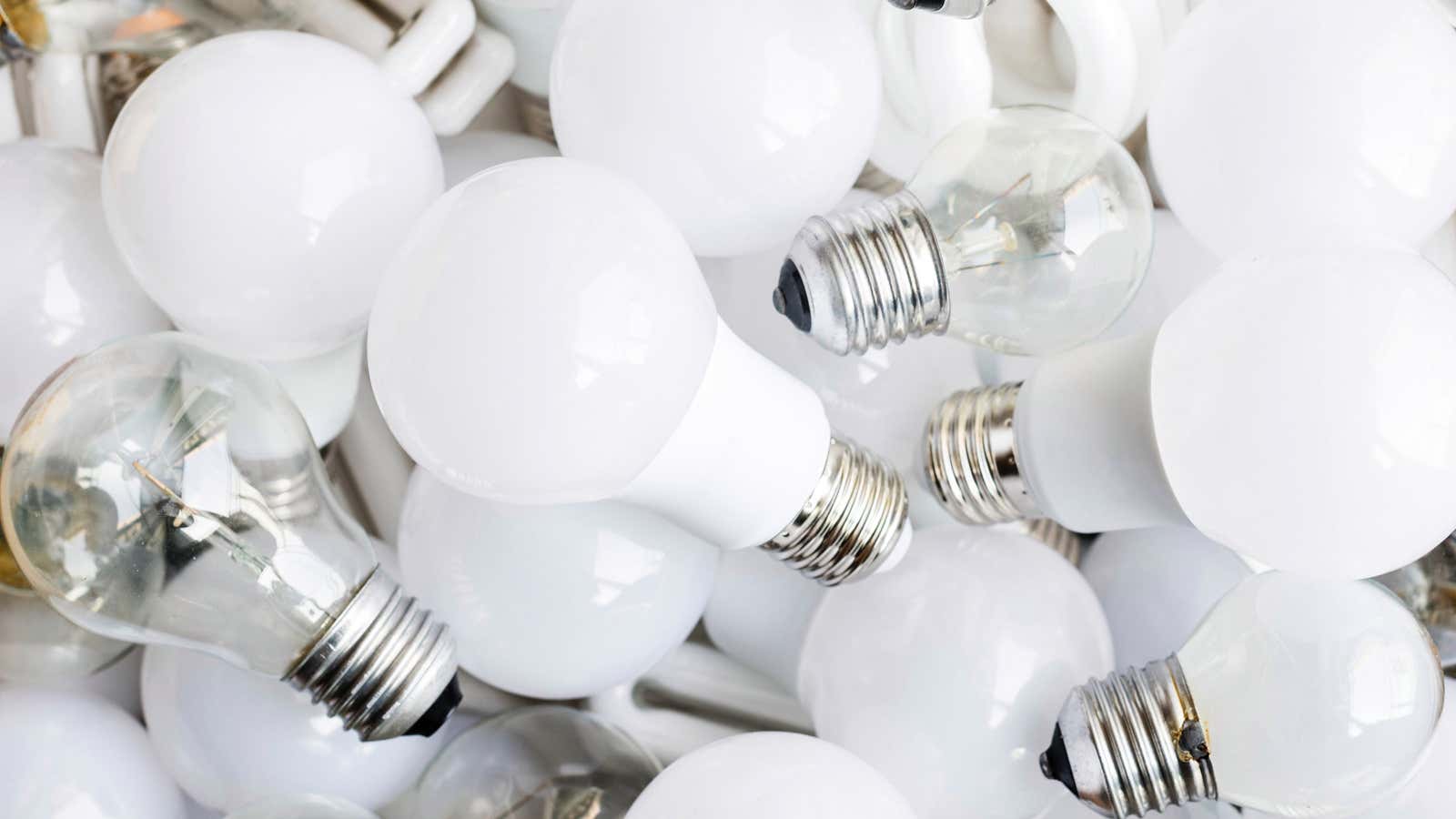The Trump administration on Wednesday (Feb. 6) moved to roll back an Obama-era rule that would make light bulbs more efficient. Set to take effect in one year, the rule would change what type of bulbs could be sold in the US, and it would save more energy than any efficiency standard in Department of Energy history, according to E&E News.
Now a proposal to roll it back comes after vocal pushback from the industry that would have to comply with it. In short, Big Lightbulb sued.
The Obama-era rule—finalized on the day before Donald Trump took office—expanded the reach of an earlier standard, so that it would require virtually all light bulbs to meet a level of energy efficiency (45 lumens per watt) that incandescent and halogen bulbs in their current form simply can’t meet. That leaves compact fluorescents and LEDs, but because compact fluorescent bulbs come with a risk of mercury contamination, the industry is already moving away from those. So as a recent newsletter of the Association of Energy Services Professionals put it, the new standards effectively “accelerate a transition to light emitting diode (LED) light bulbs already underway.”
On January 1, 2020, if the rule goes into effect as planned, it will be illegal to sell most incandescent and halogen bulbs in the US, and they’ll be replaced on store shelves with LEDs.
But while advocates for energy efficiency applauded the rule, industry groups hated it. The National Electrical Manufacturers Association sued California when the state decide to implement the Obama rule early (the court ruled in favor of California). The group also sued the Department of Energy, arguing that the rule was illegal. In a settlement, the DOE agreed to reassess the rule.
On Wednesday (Feb. 6), the Department of Energy published an early copy of its proposal to repeal the light bulb rule. It is illegal for the federal government to “backslide” on efficiency standards. In the proposal, the DOE argues that it is simply changing a definition of which lamps the efficiency standard could apply to, not changing the standard itself, and therefore isn’t in violation of the “anti-backsliding” provision.
The DOE’s proposal will likely be published in the Federal Register in the coming days, which will launch a 60-day public comment period on the proposed change.
Energy efficiency advocates argue that blocking the new lightbulb standards runs counter to the consumer tide already taking place—that people already prefer LEDs for practical reasons.
“I just don’t understand the rationale behind trying to turn back the clock,” Jason Hartke, the president of the advocacy group The Alliance to Save Energy, told The Hill. “There aren’t many people out there clamoring for outdated light bulbs that use four or five times as much energy. Consumers have moved on and embraced high-efficiency bulbs like LEDs because prices are plummeting and because they’re getting a better-performing, longer-lasting product that saves them money.”
On Thursday (Feb. 7), the National Electrical Manufacturers Association published a letter in support of the rollback.
